Acro™ S-2
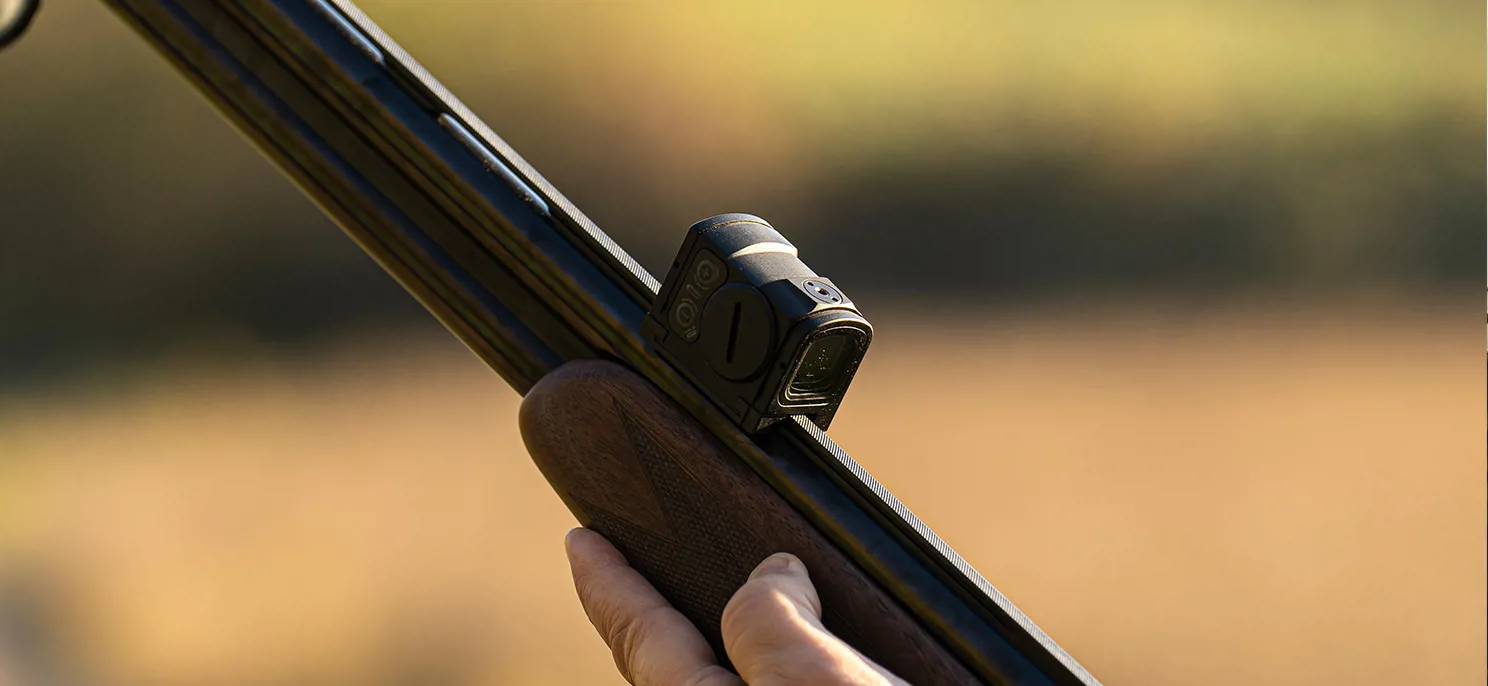
1.23.2020
''A quick look at the GPS tracking device reveals that the dog is 328 meters to the northeast. Magnus moves forward, determined, but carefully. A wild boar is a formidable opponent to any dog.''
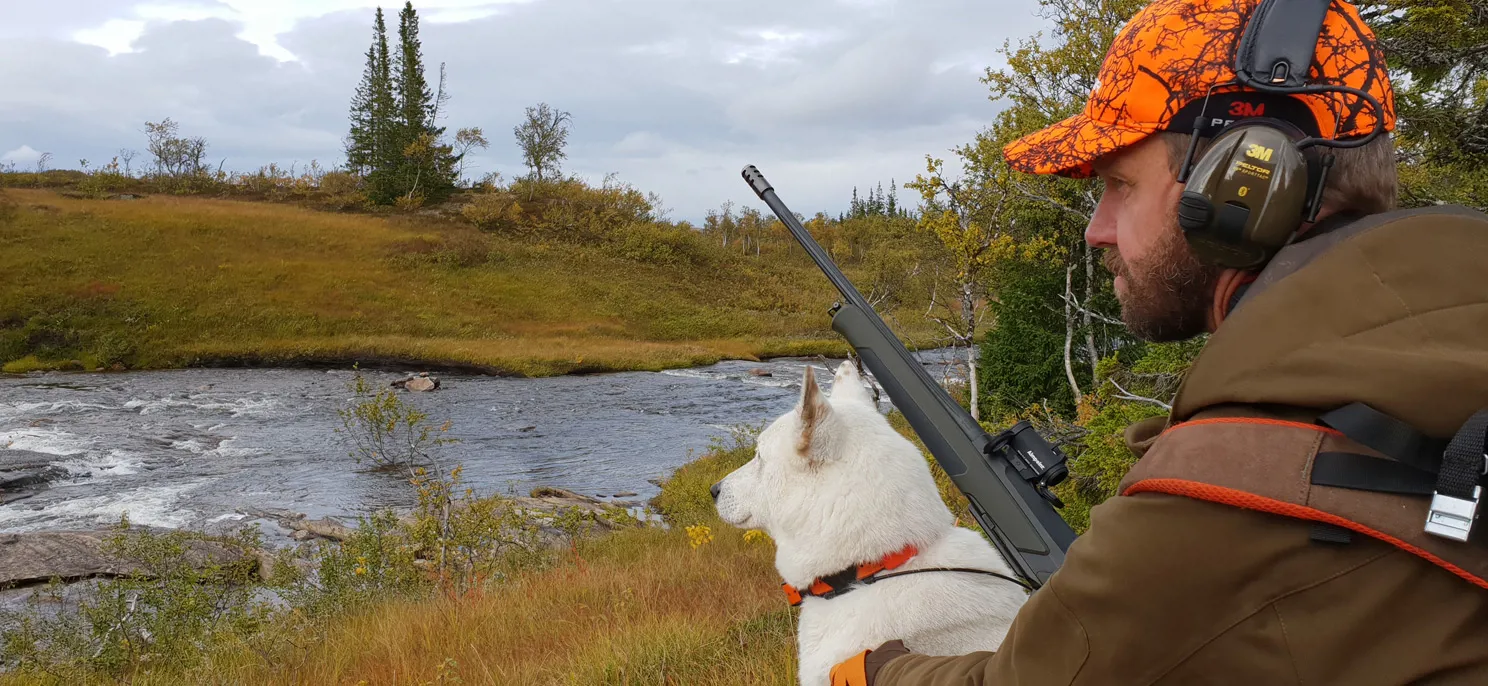
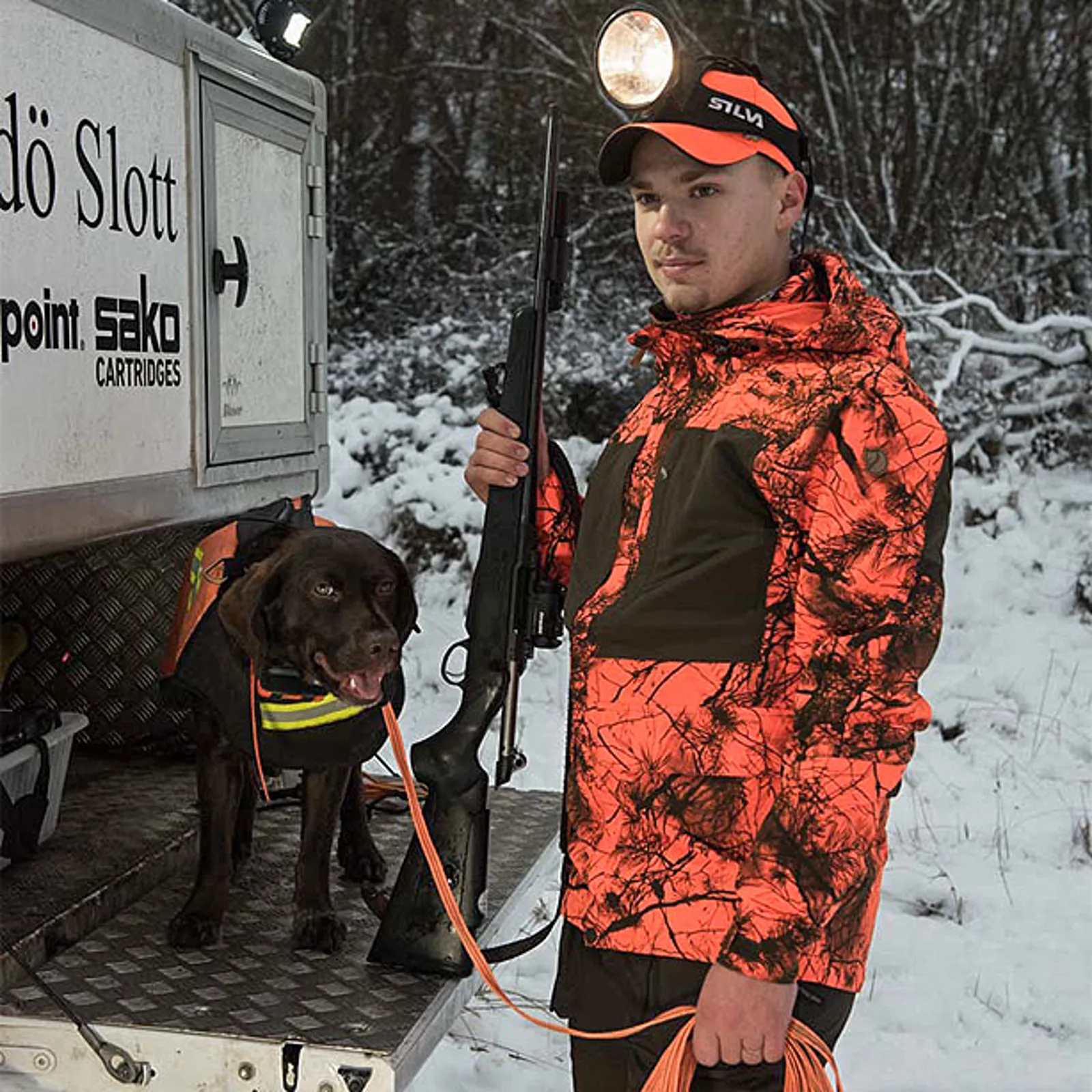
The distant bark of Nitro, the blood tracking dog, tells Magnus the dog handler that the wounded wild boar is at bay somewhere in the brambles on the far side of the gorge. A quick look at the GPS tracking device reveals that the dog is 328 meters to the northeast. Magnus moves forward, determined, but carefully. A wild boar is a formidable opponent to any dog. It will fiercely defend itself, and there is always a risk that one of its sharp tusks will wound a dog. A strong Kevlar west, like the one Nitro is wearing, is no bulletproof guarantee against injury.
As Magnus gets closer, the barking becomes more and more frantic. He can hear how the dog is moving around the boar in the thick cover. Magnus knows that he will have to get very close to the wounded boar to finish it off. He grasps his short rifle and checks that it is loaded and that the sight is on. With his thumb on the safety, he begins his final approach.
At a little less than ten meters, Magnus gets the first glimpse of the boar. A black mass twirling in the undergrowth. Branches are moving. The noise is deafening. Magnus raises the rifle and tries to determine exactly where the boar end and the dog begins. The distance to the dancing spectacle is, however, still too far and it takes another few steps before he gets a clear shot. With a sharp whistle, he catches the attention of Nitro, who jumps to the side. The boar looks up, the red dot finds its mark, and in a fraction of a second, the drama is over for everyone involved.
Nitro and Magnus have tracked and dispatched hundreds of wounded animals over the years. Every experience makes the team a little sharper- a little more efficient. Magnus hasn’t kept track of the number of hours that went into training. It’s thousands, and it’s a never-ending process.
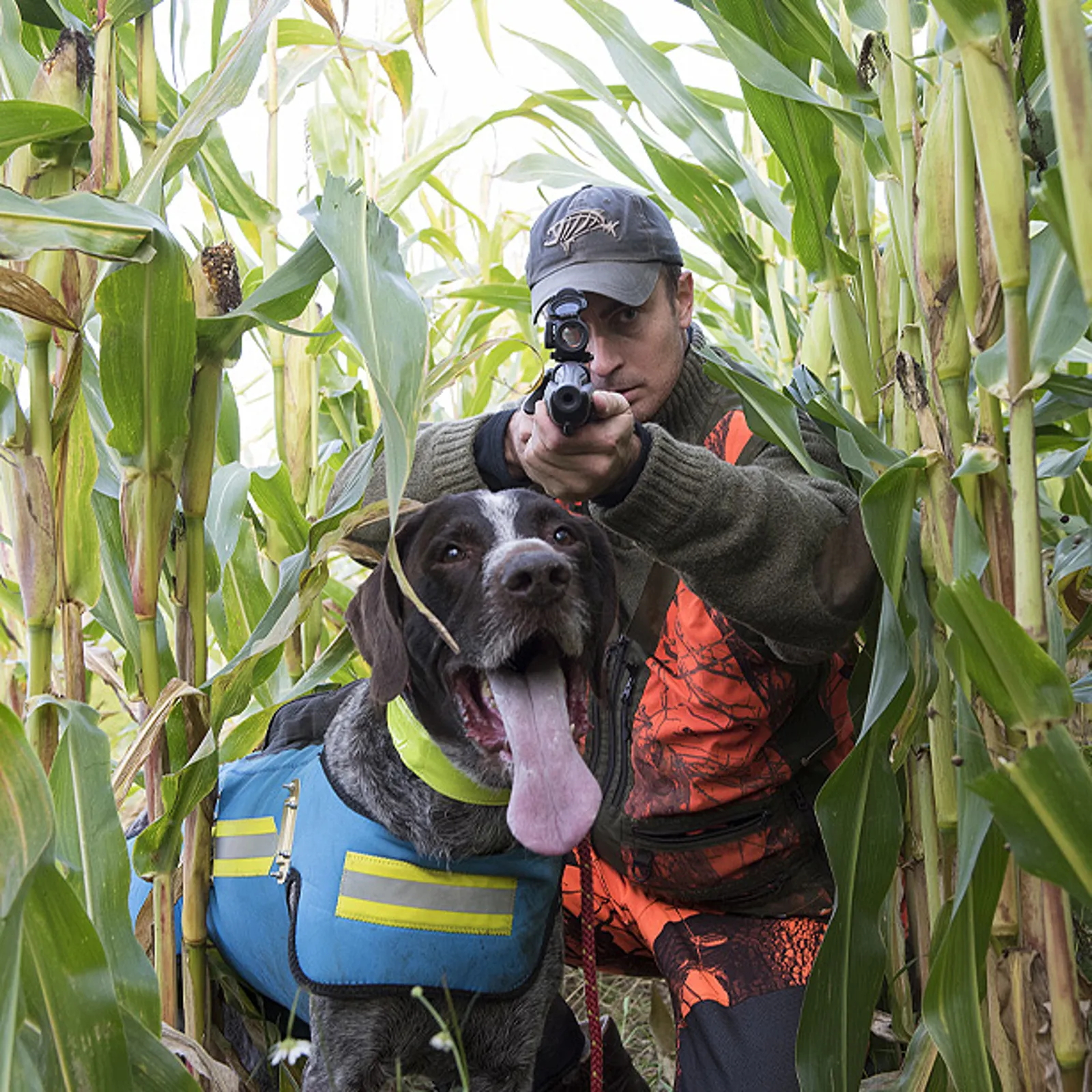
Nitro and Magnus are not exceptional. The bond that hunters enjoy with dogs dates back trough 20,000 years of history. Domesticated wolves were the first animal companions of humankind, and unlike so many other working relationships between man and beast, the dogs' role in our lives has not fainted over the centuries. The dog work is as important to modern hunters as it was to our Neolithic ancestors. In fact, hunting dogs have probably never been more specialized than now.
We breed and train our dogs to excel in a wide range of entirely different disciplines. They drive wild animals out of thick cover, they track wounded game, and they retrieve shot birds. We expect our dogs to perform under adverse conditions in cold, wet, dark, dense and dangerous conditions and they do! It is hard to imagine how we would manage to move a group of wild boar from a thicket or track an injured deer over kilometers of forest floor without the aid of top tuned canines. Well-performing dog teams are the backbone of many hunting areas worldwide.
The time and effort invested in the performance of the dog handling teams are enormous. When one considers the fact that no hunter can expect more than a decade of work from any dog, it becomes clear how big an investment a good dog is. Every day counts. Of course, that is one of the main reasons most modern dog handlers also invest heavily in equipment to help them achieve their goals.
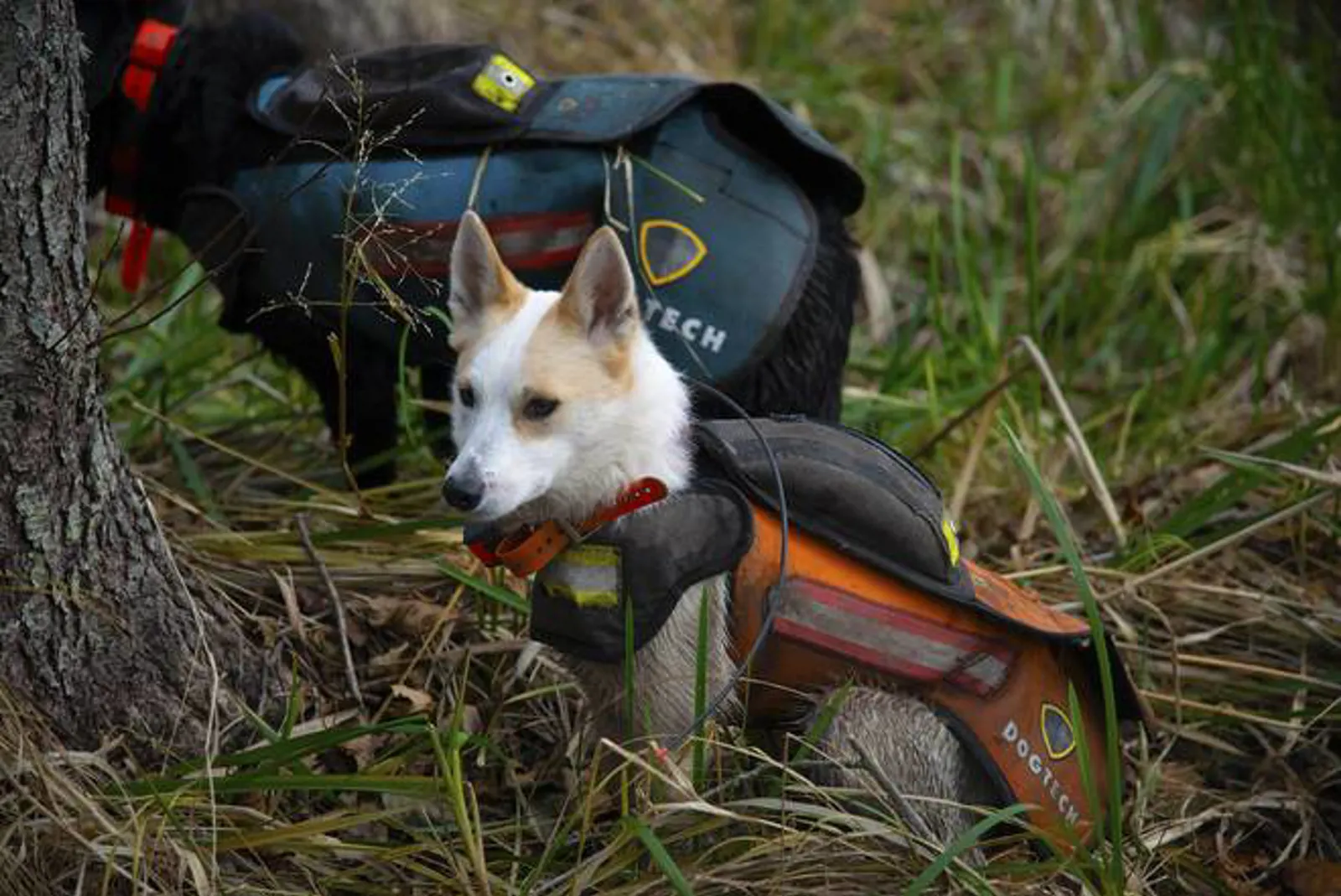
The list of high-tech equipment available for the dog teams is long.
1. Stab-proof safety vests to protect the dogs from angry boars and predator attacks.
2. Flotation vests to help the retrievers through long days of swimming in icy water.
3. GPS tracking devices to find the dogs when they are working far away from their handlers.
4. Transportation cages to keep the animals safe in the car.
5. Short rifles with red-dot sights and long knives to dispatch wounded game with minimal risk of injuring the dog.
To the passionate dog handler, it is all about optimizing the chances of success while protecting a dear friend and comrade in arms in the process.
Compared to the hunter without a dog, the dog handlers typically see more action, get closer, work harder, and put themselves at greater risk of accidents.
Passion is the main ingredient of a successful team.
Take part in our shooting adventures and hunting experiences. The content comes from experienced hunters and professional users in the form of articles, videos, how-to guides and other practical information that will help you to get the most out of your sight from Aimpoint.